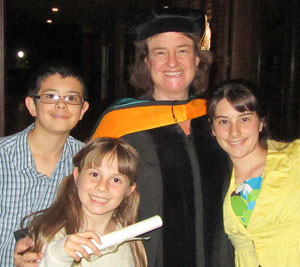Meet Our 2017 July Provider of the Month! Stephanie M. Foster

Meet our July 2017 Provider of the Month, Stephanie M. Foster PhD, OTR/L. This accomplished IM Provider, really runs the gamut as far as skills, knowledge and experience. After years of working with clients of all ages and conditions Stephanie decided to open her own practice, called Kid’s Work. Her practice was designed to focus solely on pediatrics, providing therapy to children, especially those with sensory disorders.
Background: After receiving her B.S. in Occupational Therapy in 1988 from Tuft University, Stephanie then completed an intensive 10-month internship at the Walter Reed Army Medical Center in Washington D.C. Stephanie then began working with infants, children, and adults with a wide variety of conditions. In 1994, she completed a fellowship at Boston University, and she has also earned her M.S. in Pediatric Occupational Therapy. Her fellowship focused on how to make school-based services more efficient and effective. In 2011, Stephanie completed a Ph.D. at the Santa Barbara Graduate Institute. Shortly after she opened Kid’s Work, and decided to limit the practice to providing therapy to children, especially those with sensory disorders.
Name: Stephanie M. Foster PhD, OTR/L
Type of Professional: I work as a pediatric occupational therapist in a private practice setting.
Number of Years Using IM? I became certified in November 2016. My assistant, Amy Crain, has been using it for 7 months
Facility Name & Location: Kid’s Work is located in Santa Maria, CA
Population: Children of all ages, newborn through 21, who have self-regulation and sensory processing difficulties.
Tell us about your business: Kid’s Work provides specialized occupational therapies for children with special needs, behavioral problems, or developmental delays. Our treatments address sensory processing disorders, autism spectrum disorders, ADHD, and auditory therapy, to name a few. We start by conducting comprehensive assessments so that parents can identify what is really causing their child’s stress and difficulties. During treatments, we work closely with families to create an effective and meaningful treatment.
We combine over 24 years of expertise into the best possible match with the child’s learning needs. Our goal is to help children become better at their true occupation: embracing life through learning, playing and caring.
What made you look into IM? I wanted another tool to help children with bilateral coordination and attention spans. Initially, I was very hesitant to use technology as a treatment modality, because many of the children are overly attentive to screen time, to the detriment of their overall functioning. However, I’ve found that this excitement for technology actually helps them pay attention to the modality. Many times, we use IM as the motivator (i.e. if you do all of your exercises, you can have extra time with IM.
What do you like most about IM? I like the versatility and the ability to measure improvement in a totally objective manner. My re-evaluations (which I do every 3 months) are now much more evidence-based. It is easier to say, “This child is improving,” when you can show real-time numbers. I also like seeing the improvements the clients make. It’s amazing seeing a child’s attention and coordination improve.
Do you incorporate Best Practices with your IM training? I vary the ways we use IM. I’ve had students spin while lying down and clap to the beat. We’ve tried bouncing on a ball, using shoes to hit the foot trigger, and tapping the trigger underneath a table so the client could pretend to be in a rocket ship hitting the trigger above his face.
What other modalities do you use in your practice that you like to combine with IM? During our breaks, we jump on the trampoline, spin in an office chair, or ride a plasma bike.
What marketing methods have you found successful, and what ones have failed? I have a good description on my website (www.kidswork.biz) that describes IM. I also give out the pediatric IM brochure to families of children that I am considering for intervention. I haven’t really done any direct marketing. I suppose that is because I consider this an intervention that is part of a comprehensive and evidence-based sensory integration program. Even though I’m listed on the IM provider locator, I haven’t had much luck being able to get enough traffic to my area.
Tips for other IM Providers:
- Treat each client as an individual and try different things. It doesn’t have to be clapping in arm circles all the time.
- Also, be sure to use IM on yourself. There is no better way to describe the changes in your body than to try it yourself regularly.
- Be sure to use the helpline. There are several times when I don’t know what to do next with a child, or the software. We just call clinical or technical support and ask.
Anything else? Thanks for the chance to share our experiences. It is an honor to be your Provider of the Month, my practice has been greatly enhanced by this opportunity.
